NorthropGrumman
Latest
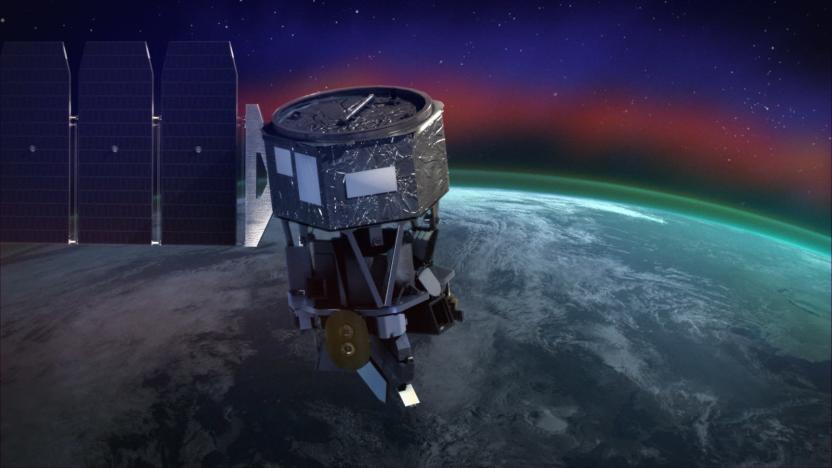
NASA's ICON launch to the ionosphere delayed (update)
Need something else to watch after all the results come in? Tonight NASA's launching a mission to explore Earth's ionosphere, but this isn't the average rocket launch. The Ionospheric Connection Explorer (ICON) will take off on a Northrop Grumman Pegasus XL rocket -- in use since the 90s, and scheduled for use with the giant Stratolaunch once that's ready to fly -- that's being dropped from a specially designed plane at about 40,000 feet over the open ocean. Dubbed Stargazer L-1011, the carrier aircraft will take off from Cape Canaveral ahead of a 90-minute launch window that opens at 3 AM ET. As Space.com notes, the launch has been delayed over concerns about the rocket, but all the testing is complete and now it's ready to fly.
Richard Lawler11.06.2018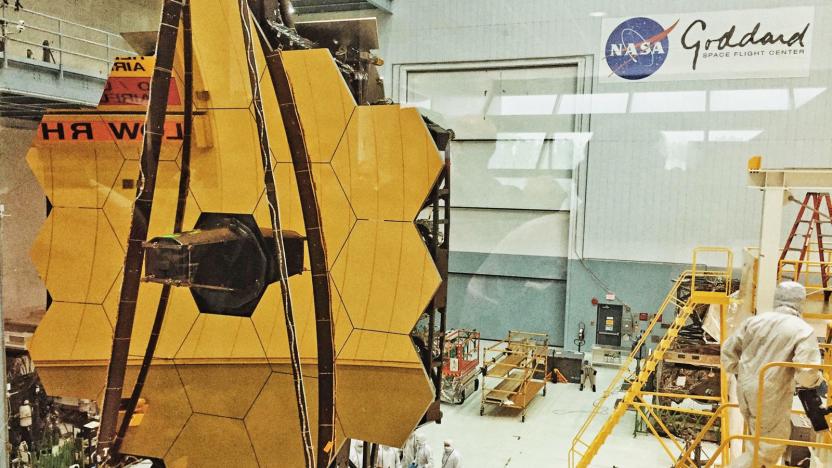
NASA delays James Webb Space Telescope launch until 2021
Today, NASA's independent review board announced that it has unanimously recommended that development on the James Webb Space Telescope should move forward. As a result, NASA has a new official launch date for the space observatory: March 30, 2021.
Swapna Krishna06.27.2018
NASA’s Hubble successor may miss its launch window
The James Webb Space Telescope, NASA's successor to Hubble, has undergone its share of delays. Now, things are getting even tighter. A report from the US Government Accountability Office finds that because of ongoing technical issues with the telescope, "additional launch delays are likely." What's more, the project is "at risk of breaching its $8 billion cost cap for formulation and development set by Congress in 2011."
Swapna Krishna03.01.2018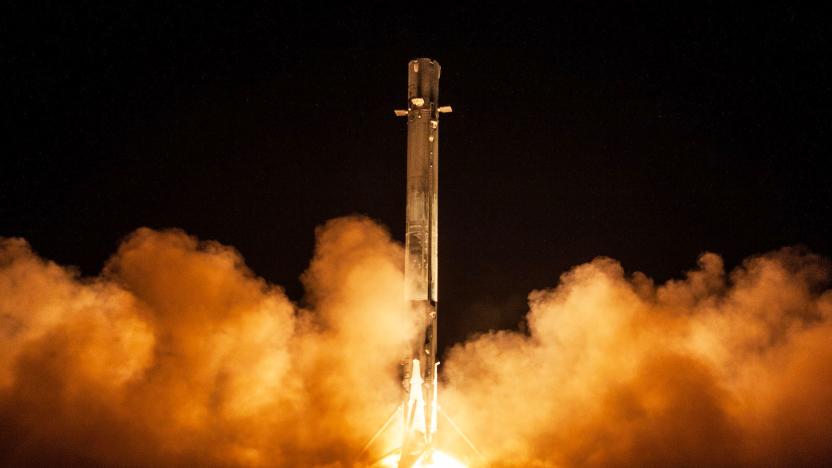
SpaceX says its rocket didn’t malfunction during the Zuma launch
Sunday night, SpaceX launched a Falcon 9 rocket carrying the mysterious Zuma payload -- a satellite made by Northrop Grumman for an unnamed US government agency. The launch itself was more secretive than usual as the classified status of Zuma meant portions of the launch weren't livestreamed like they typically are. Shortly after launch, the rocket's first stage successfully landed at Cape Canaveral but it appears that Zuma's fate wasn't as rosy. It's unclear what exactly happened to the satellite, but it appears that at the very least, it didn't end up where it was supposed to. Some pointed their fingers at SpaceX, but on Monday the company said, "We do not comment on missions of this nature; but as of right now reviews of the data indicate Falcon 9 performed nominally," meaning the rocket performed as expected. Now, SpaceX has doubled down on that statement saying whatever happened is definitely not on them.
Mallory Locklear01.09.2018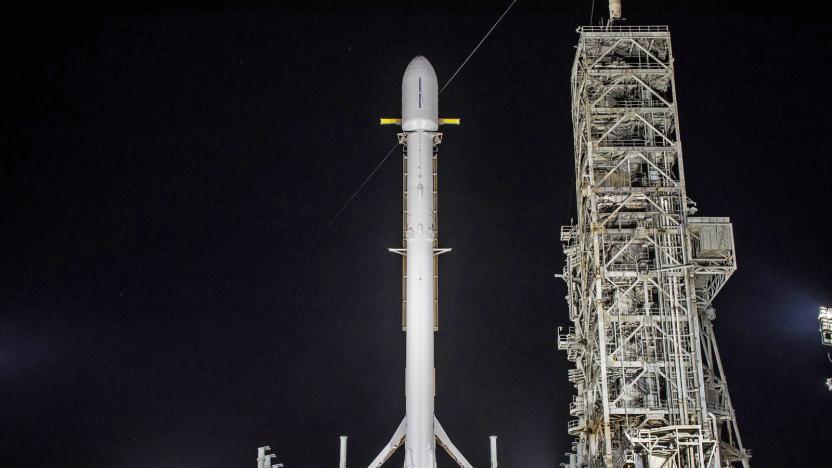
SpaceX's mysterious Zuma mission won't launch tonight
We still don't know what Northrop Grumman commissioned SpaceX to launch for the US government, but whatever it is won't get there tonight. In a move that leaves Elon Musk's calendar open for the Tesla electric semi-truck reveal (still scheduled for 11 PM ET), SpaceX said it's standing down on the Zuma mission "to take a closer look at data from recent fairing testing for another customer." The launch, which is scheduled to include a landing attempt by the Falcon 9's first stage, could go off tomorrow night, but no new launch date has been confirmed.
Richard Lawler11.16.2017
SpaceX is launching a secret mission called 'Zuma'
On November 16th, between 8PM and 10PM Eastern, SpaceX is sending a secret payload called "Zuma" beyond our atmosphere. The aerospace corporation test-fired a Falcon 9 rocket on November 11th with the intention of launching the mission on the 15th. While the latest target date was moved by a day, and it could be delayed again, Zuma needs to launch by November 30th. Why it absolutely needs to be in position by the end of this month isn't clear, though -- not when we know next to nothing about the mission.
Mariella Moon11.15.2017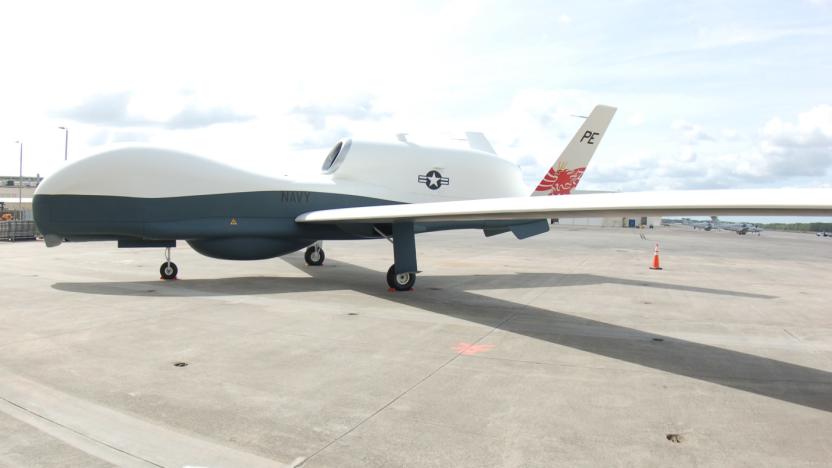
US Navy's MQ-4C Triton drone prepares for deployment in 2018
The last time we mentioned the Navy's long-range MQ-4C Triton drone was in 2013, and the project is still creeping towards eventual deployment. Northrop Grumman announced this week that it has completed formal lab testing, and also successfully flew for the first time with a software upgrade adding "Traffic Alert and Collision Avoidance System (TCAS), multi-aircraft control and additional Multi-Function Active Sensor (MFAS) radar modes."
Richard Lawler04.07.2017
Eight top-secret aircraft that definitely aren't UFOs
Since its establishment in 1955, the Groom Lake airfield at Edwards Air Force Base—better known as Area 51—has hosted the development of some of the most exotic and advanced aircraft the world has ever seen. These so-called black projects, named for their ultra-classified nature, have produced planes like the SR-71 Blackbird, which is still the fastest and highest-operating aircraft ever built (that we know about); the F-117 Nighthawk, the world's first stealth attack aircraft; and the RQ-170, a mysterious and seldom-seen aerial reconnaissance UAV.
Andrew Tarantola01.20.2016
DARPA wants a military drone that can land on small ships
For the longest time, the US Navy has conducted surveillance and reconnaissance missions by launching planes from large aircraft carriers. Those vessels are expensive though, so the Office of Naval Research and DARPA are working on a long-endurance drone that can launch from small ships instead. Project TERN (Tactically Exploited Reconnaissance Node) has now entered phase three, meaning the initial designs are complete and the team is ready to build its first prototype. It's being developed for $93 million by Northrop Grumman, a defense contractor with plenty of experience building nightmare-inducing military assets.
Nick Summers12.30.2015
Northrop Grumman lands USAF deal for new long-range strike bomber
Defense Secretary Ash Carter and Air Force Secretary Deborah Lee James announced on Tuesday that the DoD has awarded Northrop Grumman the lead contract for the US military's upcoming Long-Range Strike Bomber (LRSB). The contract is valued $60 billion, making it the single largest airframe contract since Lockheed won the deal for the $400 billion F-35 Joint Strike Fighter over a decade ago. At that price, the 21 airframes on order are expected to cost roughly $564 million apiece (in FY2016 dollars).
Andrew Tarantola10.27.2015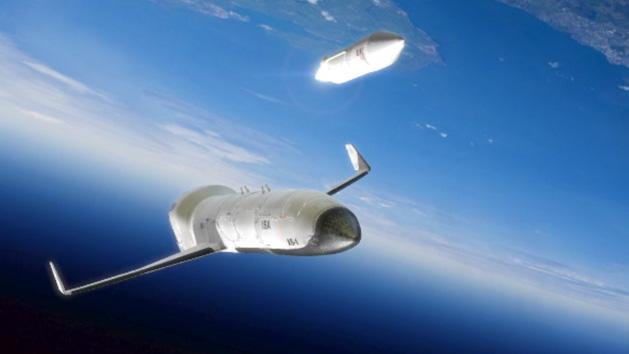
DARPA picks the first companies that will work on its unmanned spaceplane
Slowly but surely, DARPA's XS-1 Experimental Spaceplane is becoming more than a bundle of nice ideas. The agency has just chosen the companies that will square off in the first phase of the unmanned craft's design program, most of which are recognizable names in the space business. Boeing is partnering with Jeff Bezos' Blue Origin on one version of the ship; Masten Space Systems is teaming up with XCOR on another, and Northrop Grumman is cooperating with Virgin Galactic. All three groups will have to submit initial designs before DARPA can move on to a second phase, so we're still far, far away from seeing an XS-1 in orbit. But hey, it's progress -- and the companies involved are skilled enough that a cheap, highly reusable spaceplane should become a practical reality.
Jon Fingas07.15.2014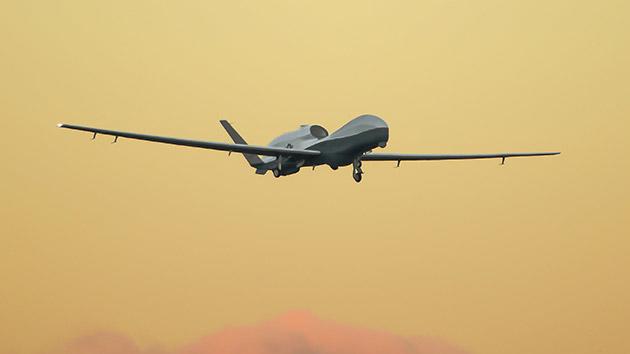
US Navy's Triton UAV completes initial flight testing
One of Northrop Grumman's new war/spy gadgets, the Triton unmanned aerial vehicle, just got closer to joining the US Navy's reconnaissance fleet. After almost two years since the defense tech company announced the aircraft, the Triton has finally completed its initial test flight program and has now been cleared to fly at various altitudes, speeds and weights. The tests, which kicked off in May 2013, spanned 13 flights (including long-endurance ones) with a total of 81 hours flown at altitudes up to 59,950 feet. To put that in perspective, commercial airplanes usually fly at around 35,000 feet in the air. While the company and the Navy successfully got through this phase, they still have to tackle more tests before the Triton goes into service sometime in 2017. They're currently preparing to equip two Tritons with sensor systems designed to take high-res images, detect targets with radar and provide a means of communication between military units over long distances. These UAVs will take to the air this June or July to determine whether the sensors work as intended. In the future, the Navy plans to build 68 Tritons specifically to work with manned P-8 Poseidon patrol planes. If the latter sounds familiar, it's because a deployed P-8 unit is currently involved in the search for the missing Malaysian Airlines flight MH370. When the Triton's ready for primetime, it could considerably extend the P-8's search range, making it better equipped to handle similar missions.
Mariella Moon03.25.2014
Northrop Grumman's MQ-4C Triton long-range drone completes first flight (video)
Northrop Grumman's MQ-4C Triton unmanned aircraft is one step closer to serving the Navy in reconnaissance and surveillance missions, having just completed its first flight. The drone spent 80 minutes in the air, reaching an altitude of 20,000 feet. That's child's play compared to the aircraft's full potential: according to the Navy, it can soar at up to 60,000 feet and stay airborne for as long as 30 hours, due in no small part to its 130-foot wingspan. By 2015, the Triton will undergo operational testing and evaluation, and the Navy hopes to add additional aircraft to its existing fleet (currently just two strong). Check out the long-range spy plane in action just past the break.
Sarah Silbert05.22.2013
US Navy's X-47B is the first unmanned plane launched from an aircraft carrier (video)
After limbering up with taxi tests since December, the X-47B unmanned combat air system has finally taken off from an aircraft carrier, making it the first pilotless plane to have successfully done so, and with a catapult launch to boot. Despite the craft's ability to fly on its own, it was controlled by a human aboard the George H.W. Bush after it was flung from the ship. Once in the air, the Northrop Grumman-built craft was guided back for a landing on a runway planted on terra firm. Now that the bird's proved it can handle launches at sea, other excursions will put the automatic navigation and landing features through their paces. Hit the break for a video of the X-47B taking to the skies.
Alexis Santos05.14.2013
Navy launches first drone squadron, comprised of ten Fire Scout MQ-8Bs
The US Navy has officially introduced unmanned aircraft along with eight newly manned helicopters into its squadron, making it the latest military branch after the Army and the Air Force to embrace the drone. Indeed, ten of the 18 aircraft to be deployed are Fire Scout MQ-8Bs, an unmanned chopper the Navy wishes to operate from combat ships set in the Pacific in about a year. Built to track targets, the Fire Scout lets troops see what's happening over potentially dangerous areas, allowing them to regroup and rearm if necessary. The drone isn't without its fair share of detractors of course, especially after the occasional communication failure, but here's hoping that these Linux-operated copters will remain well within human control.
Nicole Lee05.03.2013
Northrop Grumman, Cassidian run Euro Hawk UAV through its first full test flight (video)
Europe isn't quite as firmly on the bleeding edge of UAVs as the US. Northrop Grumman and EADS-run Cassidian just brought the continent one step closer through the first full test flight of Euro Hawk. A new take on the Global Hawk HALE with a new mission system from Cassidian, it should be the continent's first military UAV that mates both long flight durations with high altitude: the two partners expect Euro Hawk to collect strategic intelligence from up to 60,000 feet and for as long as 30 hours before it needs to touch down. There's more testing to go before active service begins -- the initial flight only lasted eight hours, for example -- but the unmanned flyer should eventually keep watch over German troops and territories well past the limits of human endurance.
Jon Fingas01.13.2013
US Army's LEMV spy blimp spotted hovering over New Jersey, may take up cargo duties (video)
The US Army's not-so-secret Long Endurance Multi-Intelligence Vehicle (LEMV) spy blimp is better at staying hidden than we thought... if unintentionally. Although it was due to fly the friendly skies of Lakehurst, New Jersey in mid-June, Northrop Grumman's usually unmanned surveillance was only just caught floating over the Jersey Shore as part of a maiden flight on August 8th. The conspicuous, delayed test run proved that the LEMV could take off, steer and land smoothly, and started a series of exercises that should culminate in combat trials over Afghanistan at the start of 2013. Northrop's KC Brown Jr. tells Wired that there's a possible (if purely coincidental) consolation for missing another deadline -- the airship could be used in a pinch for carrying as much as seven tons of supplies without getting into harm's way, albeit at a fairly glacial 30MPH. The successful first flight won't be much consolation to Mav6, whose Blue Devil 2 was scuttled at the last minute after technical issues; it's nonetheless a relief for US troops, who may get weeks at a time of constant intelligence on enemy movements. Catch a short snippet of the early LEMV journey after the break.
Jon Fingas08.09.2012
Northrop Grumman Unveils US Navy's MQ-4C BAMS Triton unmanned aircraft
If Broad Area Maritime Surveillance, or war gadgets are your bag, then things just got real. Northrop Grumman has just unveiled the MQ-4C BAMS Triton, the latest addition to the US Navy's Maritime Patrol and Reconnaissance Force. The spy plane was more than four years in development, has a wingspan of 130.9 feet, and is able to cover more than 2.7 million square miles in a single mission. As you will have been unable to avoid noticing, the unmanned aircraft definitely inherited some of the RQ-4 Global Hawk's dome-like DNA, and will edge towards active service after completing functional requirement reviews and system development and demonstration flights. Want to bone-up on the full spec? Hit the more coverage link for the numbers. In the meantime, we're wondering if they might extend the research.
James Trew06.16.2012
Army spy blimp to launch within weeks: 300 feet long, $500 million, 'multi-intelligent'
It can't go faster than 34MPH and it's already a year late for its planned deployment in Afghanistan, but Northrop Grumman's Long Endurance Multi-Intelligence Vehicle (LEMV) is now set for its maiden flight. The test run is scheduled for sometime between June 6th and 10th over Lakehurst, New Jersey, whose residents ought to be forewarned that it is not a solar eclipse or a Death Star, but simply a helium-filled pilotless reconnaissance and communications airship that happens to be the size of a football field. After floating around for a while, the giant dirigible is expected to journey south to Florida, where it'll be fitted to a custom-built gondola that will carry the bulk of its equipment, and by which time her enemies hopefully won't have come into possession of an air force.
Sharif Sakr05.23.2012
Scaled Composites and Northrop Grumman's new Firebird spy plane: pilot optional
Scaled Composites is best known for creating commercial spaceships for Sir Richard Branson, but it turns out the firm can construct more conventional flying machines, too. The company has joined forces with Northrop Grumman to build the Firebird, a flexible new plane that's a veritable surveillance Swiss Army knife. Part Predator UAV and part traditional aircraft, the Firebird can take to the skies with or without a human at the controls as it combs the earth for enemies of the state. What's more, the airframe's HD video and infrared cameras, radar, and communications gear in the fuselage are able to gather info simultaneously to find the bad guys, and those payloads are easily swapped for other equipment through a universal interface. It's scheduled to strut its intelligence-gathering stuff during a military exercise in a couple weeks, and if all goes according to plan, it'll become another terrorist tracking tool in the U.S. arsenal. Video of the brand new bird in action is after the break.
Michael Gorman05.10.2011